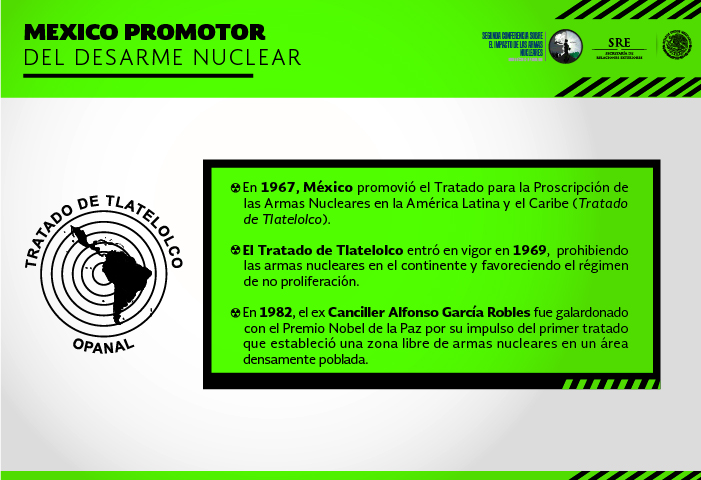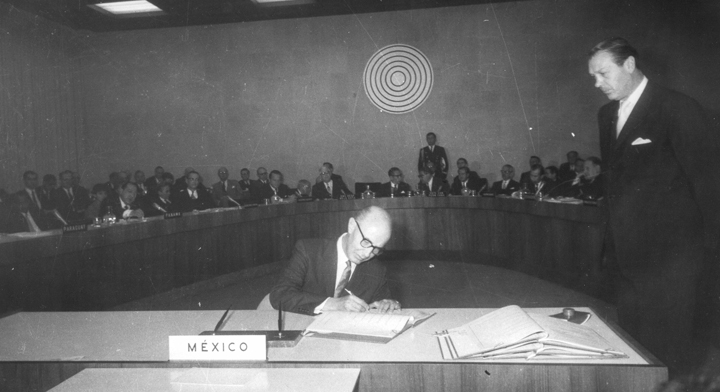The Treaty for the Prohibition of Nuclear Weapons in Latin America and the Caribbean, better known as the Treaty of Tlatelolco, was signed in Mexico City on February 14, 1967.
The treaty attests to an entire geographical region’s rejection of the notion that nuclear weapons are guarantors of international security.
What are the goals of the Treaty of Tlatelolco?
- To ensure the absence of nuclear weapons in the zone of application defined in the Treaty.
- To contribute to the nonproliferation of nuclear weapons.
- To promote general and complete disarmament.
- To use nuclear material and facilities only for peaceful purposes.
- To prohibit and prevent the testing, use, manufacture, production or acquisition by any means whatsoever of any nuclear weapons.
- To prohibit the receipt, storage, installation, deployment and any form of possession of any nuclear weapon.
- To refrain from engaging in, encouraging or authorizing, directly or indirectly, or in any way participating in the testing, use, manufacture, production, possession or control of any nuclear weapon.
Thirty-three Latin American and Caribbean countries have signed and ratified the treaty:
Antigua and Barbuda, Argentina, Bahamas, Barbados, Belize, Bolivia, Brazil, Chile, Colombia, Costa Rica, Cuba, Dominica, Dominican Republic, Ecuador, El Salvador , Grenada, Guatemala, Guyana, Haiti, Honduras, Jamaica, Mexico, Nicaragua, Panama, Paraguay, Peru, St. Kitts and Nevis, St. Lucia, St. Vincent and the Grenadines, Suriname, Trinidad and Tobago, Uruguay and Venezuela.
The Agency for the Prohibition of Nuclear Weapons in Latin America and the Caribbean (OPANAL), based in Mexico City, was created by the Treaty of Tlatelolco to monitor its implementation. It serves as a forum for the exchange of information and consultation amongst the countries of the region and interacts with other countries that are part of nuclear-weapon-free zones.
Nuclear-Weapon-Free Zones
Nuclear-weapon-free zones (NWFZ) are an example of political decisions that are based on diplomacy and international law. Countries that have decided to belong to NWFZ have taken the sovereign decision not to develop, produce, stockpile, possess, transfer or use nuclear weapons.
Mexico promoted the first NWFZ in a densely populated area of the world (Latin America and the Caribbean) through negotiation and the adoption of the Treaty of Tlatelolco.
To learn more about the Treaty of Tlatelolco, visit http://www.opanal.org/inicio.html
Source of the information and infographics: Mexican Foreign Ministry, Directorate General for Disarmament and the General Assembly (DGONU)

